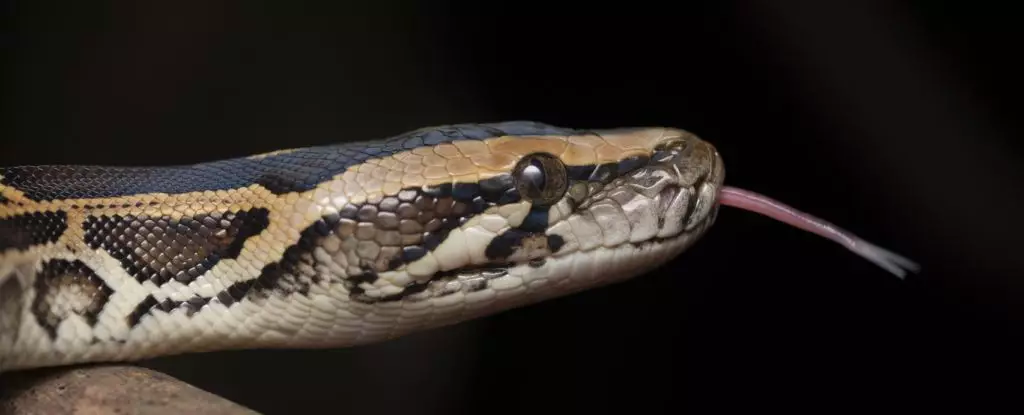Nature often presents us with astonishing puzzles, and the remarkable ability of Burmese pythons to fully digest bones from their prey is certainly one of them. While most creatures leave behind unpalatable bones or regurgitate them, these snakes have evolved a sophisticated mechanism that allows them to consume entire prey, bones and all, with astonishing efficiency. The recent discovery of a specialized cell type in their intestines sheds light on this extraordinary feat, revealing a nuanced biological system designed to handle what would otherwise be a catastrophic overload of vital minerals like calcium and phosphorus.
This newfound cell type does more than just facilitate digestion—it exemplifies evolutionary brilliance. The snake’s intestinal lining contains cells that are uniquely adapted to process large quantities of mineral-rich skeletal material without causing imbalances in their physiology. These cells act as biological gatekeepers, extracting necessary nutrients while simultaneously preventing potentially toxic accumulation of excess calcium and phosphorus in the bloodstream. Such an adaptation is not only fascinating but also illuminates the delicate balance organisms maintain to thrive in their environments.
Reconsidering Our Understanding of Digestive Physiology
Traditional views on digestion often underestimate how flexible and complex certain animal systems can be. In most vertebrates, bones are considered secondary figures—things to be expelled or regurgitated. The fact that some snakes don’t just swallow bones but are able to enzymatically disassemble and absorb their mineral content challenges this reductionist perspective. It pushes us to question whether other animals, perhaps less studied or with different dietary habits, might possess similar unrecognized capabilities.
Moreover, the discovery of these specialized intestinal cells prompts a reevaluation of vertebrate evolution. The shared presence of these cells in both pythons and Gila monsters hints at an ancient, perhaps conserved, biological strategy. It raises intriguing questions about the evolutionary pressures that shaped such an adaptation: Did this mechanism arise out of necessity, or as a byproduct of dietary specialization? Either way, it highlights the plasticity of biological systems in response to ecological niches.
The Broader Implications and Future Directions
Understanding this extraordinary adaptation has profound implications beyond herpetology. It prompts us to look more critically at how other apex predators, specifically marine animals that swallow prey whole, manage similar challenges. The possibility that these cells or analogous systems exist in other species opens avenues for research that could redefine our understanding of digestive diversity across the animal kingdom.
Yet, as much as this discovery is inspiring, it also exposes our scientific gaps. We still do not fully comprehend how these cells are regulated, how they develop, or their precise molecular mechanisms. This gap underscores the necessity for ongoing research, not only to fill internal gaps but to appreciate the broader evolutionary context. The revelation that such cells help balance mineral absorption without causing harm is a testament to nature’s ingenuity—an ingenuity that remains partially hidden and waiting to be fully understood.
In the center of this discussion lies a simple truth: adaptation is relentless and often surpasses our expectations. The snake’s ability to process bones completely, without burdening its system, hints at the latent potential within biological systems—a potential that both humbles and inspires. To fully grasp this capability, scientists must look beyond conventional boundaries and explore the interconnectedness of physiology, evolution, and ecology with a sharper, more critical eye. Only then can we truly appreciate the extraordinary complexity woven into the fabric of life.


Leave a Reply